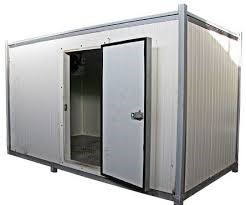
- Seen : 612 View
What is Ice Bank? Ice bank is a type of water cooler with the ability to store ice, which has the ability to accumulate ice to supply energy in times of high consumption. In a controlled cooling process, the only system that can provide a cold fluid with a constant and uniform temperature all the time is the ice bank. This is very important in the food industry, dairy, etc., where the time and temperature of the product are important. The ice bank consists of a storage tank, a spiral heat exchanger made of steel or copper and a stirring system. The tank filled with water is cooled by a refrigerant such as freon gas, ammonia, or chlorine. In this system, the water around the coil pipes slowly freezes on the pipe. This device is actually a type of chiller, with the difference that usually chillers do not have the ability to cool water below seven (7) degrees Celsius, but ice banks can bring the water temperature to zero (0) degrees Celsius without using antifreeze. It is noteworthy that compression chillers produce refrigeration energy in times of need, so when calculating the capacity of the selected chiller, the tonnage of refrigeration must be selected according to the need in times of high consumption. In the air conditioning industry, ice banks can usually be used in places that don't need constant cooling due to low consumption at night and the possibility of energy storage. For example, in schools-government offices-offices-medical offices, ice banks are also used in livestock farms, milk collection stations, dairy factories, and factories that have pasteurizer operations in their production process, instead of above-zero and below-zero chillers.
Types of ice banks:
1- Advanced ice banks: at the factory site, together with the water storage tank and cooling equipment, the unit and gas charging are done in an integrated manner.
2- Coil ice banks: can be used in insulated cement pools or pre-made concrete and metal tanks.
3- Modular ice banks: these ice banks are used in collections that have limited space to maximize the use of space for energy storage. And this feature provides that with the growth of the collection and the need for more cooling, it is possible to increase the number of ice storage modules. Advantages of using Ice Bank:
1- The price is more suitable for its efficiency
2- Increasing the efficiency of the system
3- Possibility of cold storage
4- long life of the device
5- Less energy consumption, according to the explanations given, the use of ice banks in some industries, especially air conditioning instead of building chillers, is increasing.
Saler Company Information










